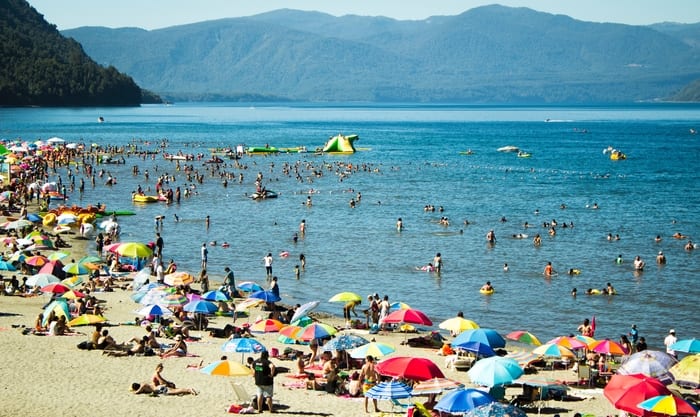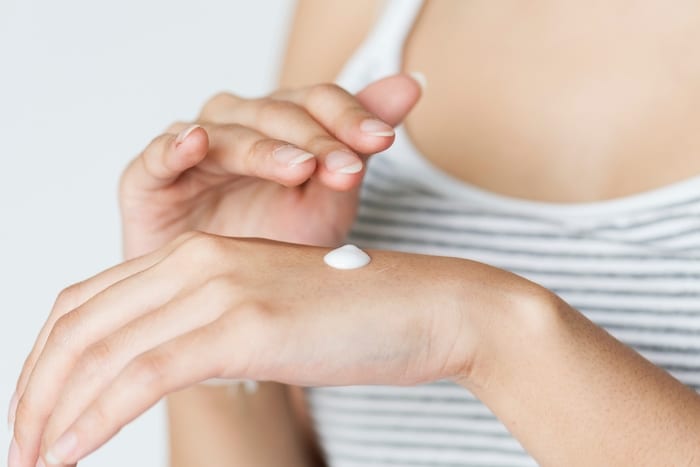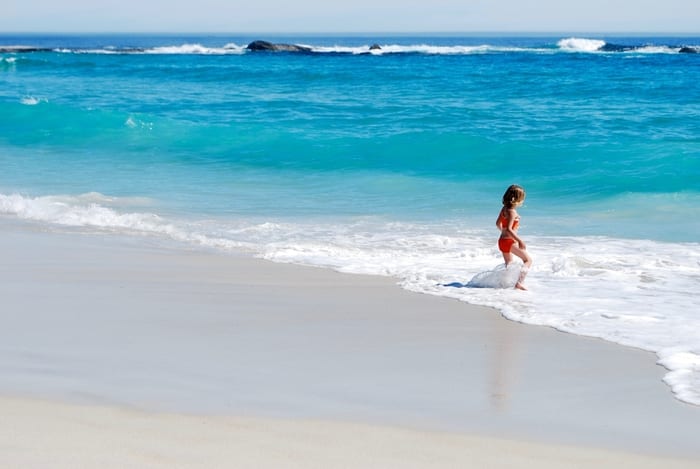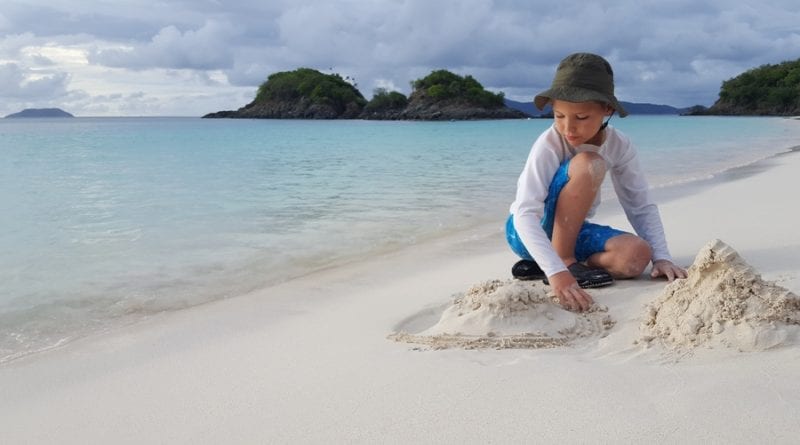Sunscreen vs No sunscreen
It’s a typical Saturday somewhere in “Sunnytown”, USA. The family is getting ready to go to the beach. Sunscreen vs no sunscreen? Should be one of the main questions the family should ask while preparing for the beach. Of course, Mom sprays the kids as well as herself with two coats of 70 SPF sunscreen. Dad being the big shot says “he doesn’t need any”.Now, most people would automatically jump on Dad for not modeling proper sun safety to his kids. Although, many studies are showing that Mom may need to reevaluate her actions as well.

Sunscreen vs No sunscreen?
It all depends on the effort you put into using alternatives to sunscreen such as finding/making shade, staying out of the sun during peak UV times and wearing sun protective clothing.
The odds are that the chemicals used in sunscreen will be proven dangerous in the near future.
Along with the effect that they have on the environment putting an effort into finding alternatives to sunscreen will be more prevalent.
The answer might have been “just use natural sunscreens”.
Unfortunately, new information has come out stating that “natural” sunscreens do not protect as well as chemical varieties.
This makes sunscreens manufactured from Zinc and Titanium Oxide not as good of an option as we once thought.
While on your once a year family vacation to Florida is it better to lather up with a chemical-laden sunscreen and prevent a 1st-degree sunburn?
Absolutely.
Does exposing yourself and the environment every day to the harsh chemicals in sunscreen in order to protect yourself from the unlikely possibility of developing melanoma due to an occupation or a lifestyle that puts you in the sun every day the solution?
Not so much.
Is using natural sunscreens and inevitably looking like a ghost or zombie due to the chalky effects that natural sunscreens exhibit only to show mediocre results a better idea?
Better than nothing but not optimal.
You could always use a sunscreen using the Nano form of Zinc or Titanium Oxide to prevent the “zombie” look but as of now, it is still a newer technology and some professionals believe that it hasn’t been proven to be completely safe yet.
There are far too many sun protection alternatives now that allow a health-conscious person to avoid chemical sunscreens.
Here are some options:
- Stay out of the sun for long periods of time.
- Stay out of the sun from 10 am to 2 pm which is the most intense time of the day for UV rays.
- Find shade.
- Make shade via umbrella or shade tent.
- Wear a sun protective hat. The best varieties are the ones with a large and wide brim in front with a “sheik” or long cover in the back. This allows effective protection for both your face and neck.
- Wash clothing with UV-repelling laundry detergent
- Wear light, breathable and tight woven or UV blocking long sleeve shirts.
- Wear a long sleeve swim shirt and hat while swimming.
- Wear light, breathable and tight woven or UV blocking long pants.
- Wear sunglasses to protect your eyes.
- Eat well, take antioxidants or other natural remedies to help neutralize the free radicals produced from UV damage.
- Use these approaches even when it is cloudy outside as UV rays are limited but still prevalent.
When you combined finding shade or making shade as much as possible, wearing sun-protective hats/clothing and using the other strategies in the list above you will not only be sun safe but healthier in general.

Was sunscreen really ever effective?
In the early years of using sunscreens, they did not sufficiently block UVA rays.
These are the long-range waves that penetrate deep into the skin.
Sunscreen and its SPF (Sun Protection Factor) markers were only intended for UVB rays or the shorter range waves that cause sunburns.
So the family mentioned above sprayed or slathered on their sunscreen as a good person should.
Although, while everyone may not have gotten a sunburn the UVA rays were still pounding away causing deeper damage to the family.
Some sun health researchers and professionals believe that this is why many of the earlier studies performed on sunscreens might have shown sunscreens as possibly causing cancer.
This is because the public did not understand the principles of both UVA and UVB rays and the sunscreen manufacturers did not divulge the lack of multi-spectrum protection as they should have.
Due to this fact, the public thought that they were getting protection for both spectrums of UV rays.
From this misunderstanding or the lack of transparency from the sunscreen companies, many people stayed exposed to the UV spectrum via sunbathing or playing at the beach longer while only being protected from half of the UV rays that can cause damage.
This brings out another point.
Who should use sunscreens the most frequently?
While most research has pointed to the fact that all people could benefit from the protection that a multi-spectrum sunscreen offers the answer is people with light complexions, eyes and hair.
This is because they have less melanin in their skin.
Melanin acts as a protectant from UV rays but only to a certain extent hence the research concluding that most people could benefit from sunscreen.
This is, of course, looking at the benefits of UV ray protection and not taking into account some of the potential risk factors involved with using sunscreen frequently.
This leads us back to the fact that there are millions of light-complexioned individuals who are spraying and slathering on sunscreen because they’re the most at risk for developing skin cancers.
Only to find out they are getting the wool pulled over their eyes and not being sufficiently protected from their sunscreens.
With this false sense of protection, they say out longer and again increase their already high chances of getting skin cancer.
The vicious cycle begins.
The question of sunscreen vs no sunscreen is not an easy question to answer but the information above and below will help you start the decision process.
The Risk Of Chemical Ingredients
Luckily times have changed or at least the public has become smarter and demanded there be multi-spectrum, including UVA protection, in their sunscreens.
With all the information and studies that have proven how UV rays both UVA/UVB cause wrinkles our vanity has made sure UVA protection was added.
So we now have in addition to the Oxybenzone (6%), Octocrylene (2.8%), Homosalate (10% in SPF 55 and 15% in SPF 70), Octisalate (5%) which are mostly UVB blocker they have added Avobenzone (3%) or Parsol 1789 to block the UVA rays.
Now all is right in the world…
Unfortunately, we are not as healthy as we think.
Some of these chemicals according to studies have been shown to cause more harm than good.
The EWG or the Environmental Working Group provided a study that stated the bodies of nearly all Americans are contaminated with a sunscreen chemical that has been linked to allergies, hormone disruption, and cell damage, according to a study from the Centers for Disease Control (CDC).
This information is very important to all people but especially for those groups of people who due to their heredity are at a greater risk of developing skin cancers and in turn use sunscreens more frequently.

Oxybenzone
One of the chemicals talked about in the above statement by the CDC is Oxybenzone.
In the article from the EWG titled Americans Carry “Body Burden” of Toxic Sunscreen chemicals states Oxybenzone was last reviewed for safety in the 1970s but since then significant new evidence has been published on its toxicity and pervasive exposure.
A recent review by the European Union found insufficient data to determine whether oxybenzone in sunscreen is safe for consumers.
A study done by the CDC showed that 97% of test subjects had oxybenzone in their urine.
The study does go on to say that oxybenzone has not been associated with adverse health effects as of now.
They said that more information was needed similar to the European study.
Although, Oxybenzone or otherwise known as Benzophenone is explained differently by the author of The Chemical Sunscreen Health Disaster.
It states that Benzophenone (and similar compounds) is one of the most powerful free radical generators known.
It is used in industrial processes as a free radical generator to initiate chemical reactions.
Benzophenone is activated by the ultraviolet light energy that breaks benzophenone’s double bond to produce two free radical sites.
The free radicals then react with other molecules and produce damage to the fats, proteins, and DNA of the cells – the types of damage that produce skin aging and the development of cancer.
The article goes into more detail on how many of these chemicals in sunscreens can be damaging from mimicking estrogen in the body to washing off in the ocean and causing health risks to wildlife.
Now, on the other hand, there are scholars that disagree with the idea that these chemicals should be classified as dangerous.
Dr. Rigel a clinical professor at New York University and a consultant to the sunscreen industry says “Nobody’s seen any problems from years of these agents being used.
“To call it dangerous is misleading.”
Several researchers say that chemical sunscreen safety is a theoretical concern and that no such effect has been shown in humans.
Natural Sunscreens
Whether you believe it’s a risk or not, why put manufactured chemicals in or on your body when it isn’t necessary.
You can just as easily get protection from natural UV blockers such as Zinc Oxide and Titanium Oxide.
Zinc is FDA approved to help treat and prevent minor skin irritations and is been proven to be safe.
It also has one of the best UV protection reputations for both UVA and UVB rays.
One of the complaints about Zinc Oxide sunscreens is that they are chalky and may make you look too white or pale.
Although, with new tinted and micronized formulas it is quite easy to put on.
The jury is still out on Nano-particle versions of the Zinc Oxide sunscreens.
There is no proof that it is unhealthy but recent studies have suggested that the Nano-particle process is not refined enough to be considered 100% safe.
Nano-particles in nature are called smoke and dust.
So when you make something like Zinc or Titanium that small in size there is a chance that it could be absorbed into the skin and into the blood.
Zinc and Titanium Oxide are considered one of the best alternatives to chemical sunscreens.
I prefer Zinc Oxide rather than Titanium Oxide because Zinc is natural and people have taken Zinc as a supplement for years.
No one that I am aware of takes Titanium supplements.
Whether it’s to prevent wrinkles or cancer it seems to me that if you don’t have to put man-made chemicals on your body then you shouldn’t.
The EWG has a website called Skin Deep that evaluates sunscreens and how damaging or beneficial they are according to recent information regarding skin safety.
Check out the site and do some research on which one is right for you.
I prefer a brand which is all-natural and its main ingredient is Zinc Oxide.
I use the tinted Zinc Oxide formula from Kabana Skin Care for daily use.
I would also rather use a natural sunscreen on babies.
While it is only recommended to use sunscreen on babies after 6 months of age I would prefer not to expose my little one to the harsh chemicals by using alternative sun safety methods.
For other ways to help babies thrive, check out our article on the pros and cons of swaddling a baby.
Unfortunately, Consumer Reports has found that compared to the synthetic brands the natural products containing only zinc and titanium oxide do not rate as well in head to head comparisons for UVB sun protection.
Although, if you look at the “How we test” part of the article they state that they soak the test subjects in water for a period of time before testing for UVB ray effectiveness.
While the waterproof aspect of sunscreen is important, the test does not address the full protection of the sunscreen when waterproofing is not a factor.
Another issue with “natural” sunscreens is that there is no regulation on what is considered natural.
While most natural sunscreens are made of earthly minerals such as Zinc and Titanium Oxide by the time the processing is over and inactive ingredients are added it might not be as natural as we expected.
It would be worth a consumers time, if they are interested in safer ingredients in their sunscreen, to do the research and read the labels as natural sunscreens vary greatly in ingredients.
The good news is that some of the higher ranking natural sunscreens such as Badger Active Unscented Cream SPF 30 sunscreen tested well for UVA protection.
This is especially important as UVA rays are the most damaging UV spectrum and are responsible for premature aging and possibly cancer.

Government Regulations for Sunscreens
There is a lot of information to look out for when selecting the best sunscreen.
Some claims are backed by governing bodies that make the manufacturer prove that what they are saying about the product is true.
Here is a list of claims that are regulated by the government and not regulated
Government Regulated
SPF-
SPF or Sun Protectant Factor is the measure of how well the sunscreen protects a person’s skin from UVB rays ONLY.
Water Resistant-
There is no such thing as waterproof sunscreen so the FDA or the Food and Drug Administration does not allow this claim.
What they do allow is the title of water resistant and very water resistant.
These terms mean that sunscreens have to maintain their SPF levels for 40 minutes (to be resistant) or 80 minutes (to be very resistant) while sweating or swimming.
Broad Spectrum-
This means that the sunscreen protects from both the UVA and UVB spectrum.
The problem is that the FDA allows the manufacturer to provide only a pass/fail result in order to be certified.
This does not allow the consumer to know if the sunscreen just barely passed or provides the best protection on the market.
Not Government Regulated
Reef Safe-
Many studies have shown that some of the chemicals in sunscreens can affect reefs and marine life.
Unfortunately, there are no regulations that make the manufacturer prove that their ingredients won’t harm reefs or other marine animals.
Natural-
This term usually means the use of a natural ingredient like Zinc and Titanium Oxide but there is not a regulated standard for the term “Natural”.
The term natural doesn’t always mean that it is better for you as well.
Due to the processing of the minerals, it depends on the manufacturer and the inactive ingredients included to decide whether it is a better choice for you than chemical sunscreen products.
Sport-
This is a similar term to water resistant.
It helps advertise to sport-minded individuals that are active and participating in sports making them more prone to sweating.
While there is a possibility that a sunscreen with this indication on the label will be beneficial to people who do sweat.
There is no guarantee as manufacturers are not required to back up the claim.
Comment Below
Let us know what you think about the use of sunscreens.
Sunscreen vs no sunscreen?
Is sunscreen necessary in your opinion?
Do you think that the use of chemical sunscreens is worth the possible adverse exposure to toxins?
Is the use of nature sunscreens worth the trouble?
Do you have a good sunscreen alternative?
Let us know in the comments below.






Hey Excellent post. I was checking constantly this blog and I am impressed! Very useful info specifically the last part 🙂 I was looking for this particular info for a long time. Thank you and good luck.
Thank you, Glad to help!
Hmm it seems like your blog ate my first comment (it was super long) so I guess I’ll just sum it up what I submitted and say,
I’m thoroughly enjoying your blog. I too am an aspiring blog blogger but I’m
still new to everything. Do you have any recommendations for novice blog writers?
I’d definitely appreciate it.
Thank you for your comment! It’s all about persistence, my friend!
I blog often and I seriously thank you for your information. This article
has really peaked my interest. I am going to book mark your blog and keep checking for new details about once per week.
I subscribed to your RSS feed too.
You’re so awesome! I do not believe I’ve truly read anything like this
before. So great to find somebody with a few genuine thoughts on this subject matter.
Really.. thank you for starting this up. This website is one thing that’s needed on the internet, someone with some originality!
This site certainly has all of the information and
facts I needed about this subject and didn’t know who to ask.
Great article! We are linking to this particulazrly great post on our
website. Keep up the good writing.